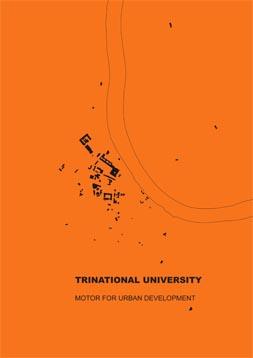Universität - Trinational University - motor for urban development

Students: Claudia Mühlebach, Claudio Waser
Location: Group work in Basel
Date: January, 2007
Type: Research project, student work, rhine
The University of Basel, founded in 1460, is the oldest university of Switzerland. The foundation dates back to a papal order by pope Pius II, dated 12th November 1459. Its inauguration celebrations were held in April of 1460. When founded, the university consisted of four faculties, the medical, theological, juridical faculties, and the faculty of the liberal arts.
From the time of its foundation, the university held very important relationships to the printing guild, which it recognized as being of vital importance to the university‘s central tasks of pursuing, storing, organizing and communicating knowledge. Hence, Basel became one of the most important centers of printing and bookmaking in Europe, and the University of Basel grew to hold a library of highest significance. Today, the library has grown to a collection of 3 million volumes, being the largest library of Switzerland.
With the mathematicians Leonard Euler or Daniel Bernoulli, and the philosophers Karl Jaspers and Friedrich Nietzsche, some of the central and most influential European thinkers have been teaching at the university. Corresponding to Basel‘s position as one of the world‘s centers for lifesciences and pharmaceutical research, two scientists of the university won Nobel prizes in the field of medicine, Tadeus Reichstein (1950) and Werner Arber (1978).
Upon its foundation, the university was located in a single building in the city center, close to the banks of the Rhine. Having moved several times in its 450-year-old history, the different institutes and faculties of the university are today spread out over the whole inner city, with the main auditorium and the administrative functions being located on Petersplatz, a small city park in the northern part of the historical city. Currently, the university is shifting its focus from a university that is predominantly focused on students of the core city of Basel, to a university for a national and international student body as well as faculty.
What spatial strategy should the university take? If the university develops a strategy for a new campus, where could such a campus be located? What are the effects on the surrounding urban context, once a campus strategy is realized, either in the existing built-up area of Basel, or in one of the semi-urbanized areas of its region?
Download the Book PDF

